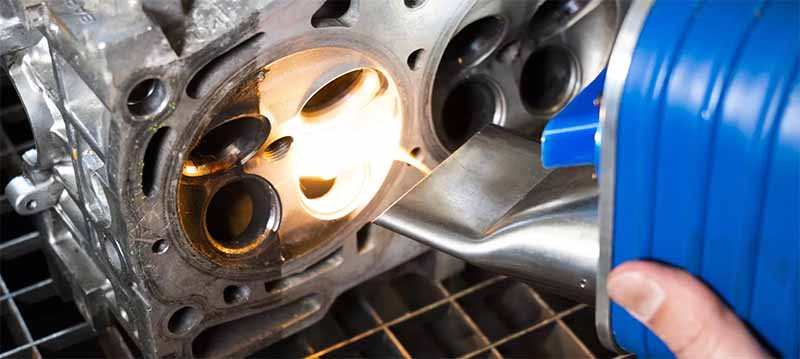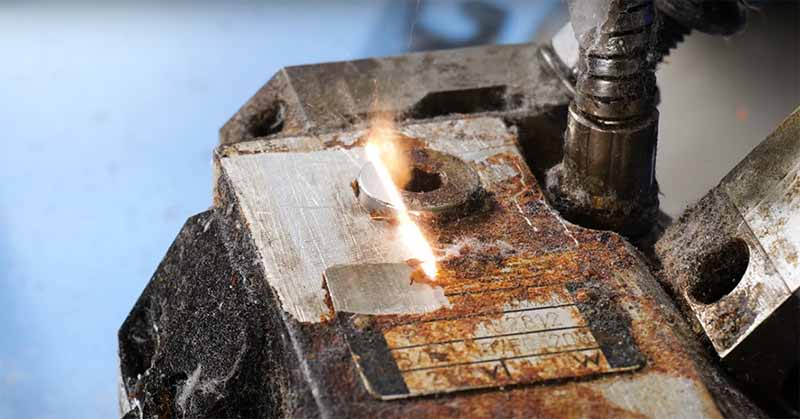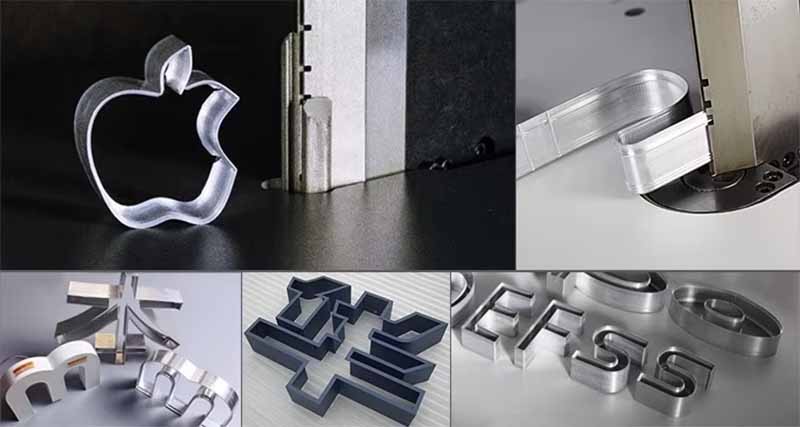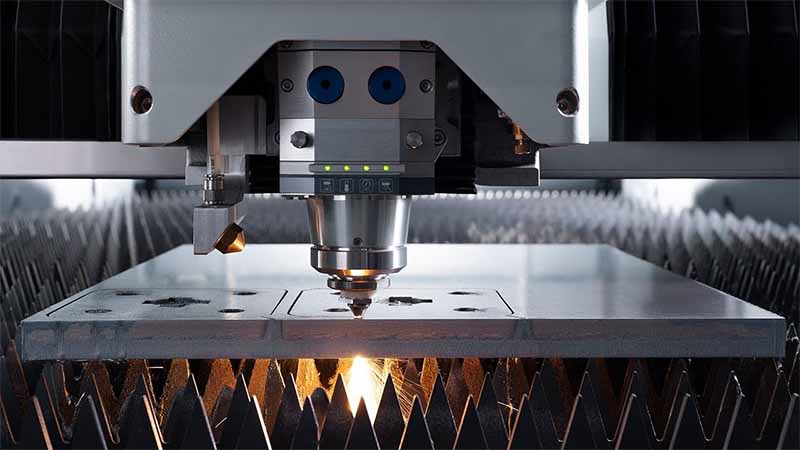In automotive manufacturing and maintenance, cleaning metal components plays a critical role in ensuring performance and longevity. Traditional methods such as mechanical grinding or chemical corrosion are often inefficient, cause damage to the parts themselves, and create environmental pollution. The best laser cleaning machine for engine parts offers a non-damaging, eco-friendly, and highly efficient cleaning solution that meets the modern demands of the automotive industry.
Laser cleaning is widely used for engine maintenance, particularly in removing carbon deposits. These deposits accumulate in combustion chambers, valves, and intake passages as a result of incomplete fuel combustion. Over time, they can cause power loss, increased fuel consumption, and excessive exhaust emissions.
Laser cleaning system works by directing a high-energy laser beam onto the metal surface. Contaminants absorb the laser energy and are instantly removed, without any mechanical contact or chemical reaction. This ensures thorough cleaning without causing damage to the metal components.
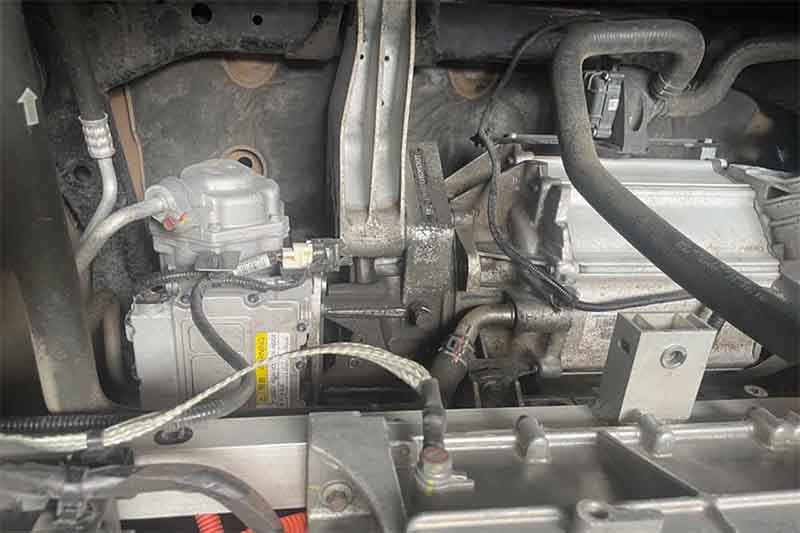
Why Choose Laser Cleaning Automotive Engines?
High Efficiency and Speed
Laser cleaning machines can rapidly remove oil, rust, paint, and other contaminants from automotive metal parts, significantly improving cleaning efficiency. Unlike traditional physical or chemical methods, laser cleaning requires no preheating, disassembly of the engine, or use of chemical agents. It acts directly on contaminants, reducing maintenance time and labor costs while greatly shortening the overall cleaning process.
Precise Control
Key parameters such as power, pulse width, frequency, and focus can be flexibly adjusted to achieve highly controlled cleaning results. This precision allows optimization for different material properties and surface conditions, effectively avoiding thermal damage or mechanical abrasion to surrounding structures or substrates. This is especially critical for complex engine components such as cylinder blocks and transmission housings, ensuring that part accuracy and performance remain unaffected after cleaning.
Non-Contact and Non-Damaging
The cleaning process is entirely non-contact, preventing any physical damage that could occur with direct handling. At the same time, the laser does not cause mechanical wear to engine surfaces.
Eco-Friendly and Energy-Saving
Laser cleaning requires no chemical solvents, produces no dust or wastewater, and minimizes environmental impact. With relatively low energy consumption, it supports the sustainable development of green manufacturing.
Versatile Adaptability
Laser cleaning is suitable for a wide range of metals, including steel, aluminum alloys, and titanium alloys. Since different engine materials have varying reflectivity and thermal conductivity, cleaning parameters can be adjusted to achieve optimal results. Whether for flat surfaces, curved areas, or complex geometries, laser cleaning can handle them with ease.
Automation and Intelligent Control
Laser cleaning systems are simple to operate, highly automated, and require minimal manual intervention. This enhances consistency, precision, and overall process reliability.
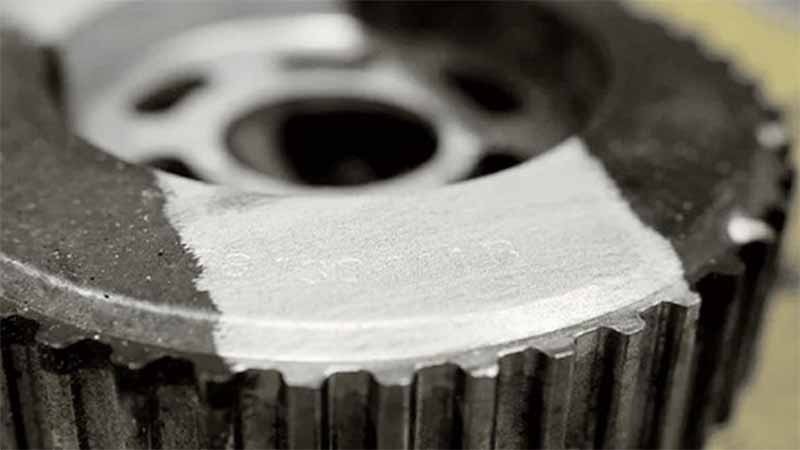
Applications of Laser Cleaning Car Parts
Rust Removal
Laser cleaning efficiently eliminates rust from various metals, restoring the original metallic surface color. It provides a superior alternative to traditional methods such as chemical cleaning, sandblasting, shot blasting, and mechanical grinding.
Oxide Layer Removal
Lasers can precisely remove oxide layers with controlled thickness, ensuring non-destructive cleaning. This makes it an ideal replacement for chemical treatments and mechanical abrasion.
Oil and Grease Removal
Laser degreasing is widely used in automotive manufacturing, electronics, and machining industries. It ensures efficient and precise oil removal, leaving surfaces clean and improving product quality as well as subsequent processing results.
Coating Removal
Laser cleaning effectively strips coatings from galvanized or aluminized sheets, significantly enhancing welding quality. It enables efficient, selective, and even inline coating removal.
Paint Removal
Extensively applied in aerospace, automotive manufacturing, rail transportation, and even cultural heritage restoration, laser paint removal efficiently strips paint without damaging the substrate. It is eco-friendly and safe, while also preparing surfaces for anti-corrosion treatment, welding, or refurbishment.
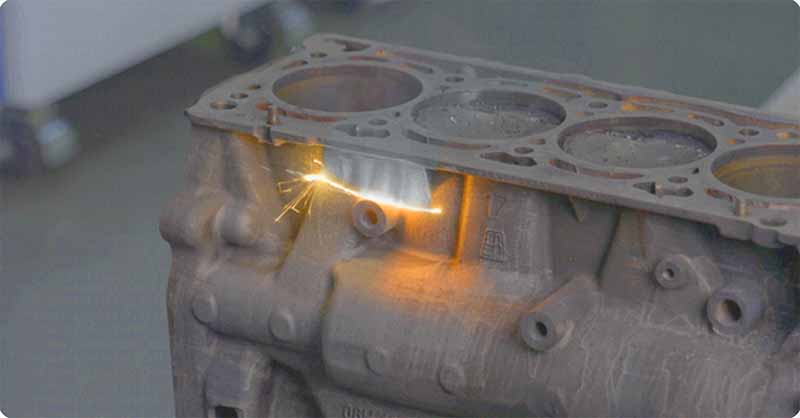
Laser Cleaning for Automotive Maintenance
Laser cleaning is widely used in the maintenance of brake discs, engine components, transmission systems, and other automotive parts. It efficiently removes rust, oil, and carbon deposits while avoiding chemical corrosion and mechanical wear, extending component lifespan and improving maintenance efficiency and quality.
Brake System Maintenance
Laser cleaning effectively removes coatings, rust, and oil from brake discs and pads without chemical solvents or manual grinding. This protects the parts, enhances braking performance, and ensures safety.
Engine Component Cleaning
During engine manufacturing, laser cleaning removes oil, rust, and other contaminants from critical components such as cylinder blocks and crankshafts. It ensures cleanliness and stable performance, reaching even tight gaps and corners for comprehensive cleaning.
Body Frame Cleaning
Prior to welding, automotive body frames require removal of oxide layers and surface rust to ensure welding quality and structural strength. Laser cleaning completes this task quickly and efficiently, boosting production efficiency.
Wheel Rim Cleaning
Wheel rims accumulate brake dust and oil over time, affecting appearance and heat dissipation. Laser cleaning thoroughly removes these contaminants, restoring the metallic shine without causing any surface damage.
Car Parts Production and Assembly Processes
In the production and assembly of aluminum automotive bodies and components, laser cleaning is used for surface pre-treatment before welding—removing oxide layers and oil contaminants—and for post-weld residue removal. This ensures weld quality and improves overall assembly precision and reliability.
Body Repair
During automotive painting or refurbishment, laser cleaning quickly removes old paint layers, rust, or contaminants, providing an ideal surface for new coatings. This minimizes paint defects and enhances coating quality.
Post-Weld Treatment
Post-weld cleaning facilitates inspection and detection of welding defects, allowing surface flaws to be identified, removed, or repaired, thereby ensuring product quality.
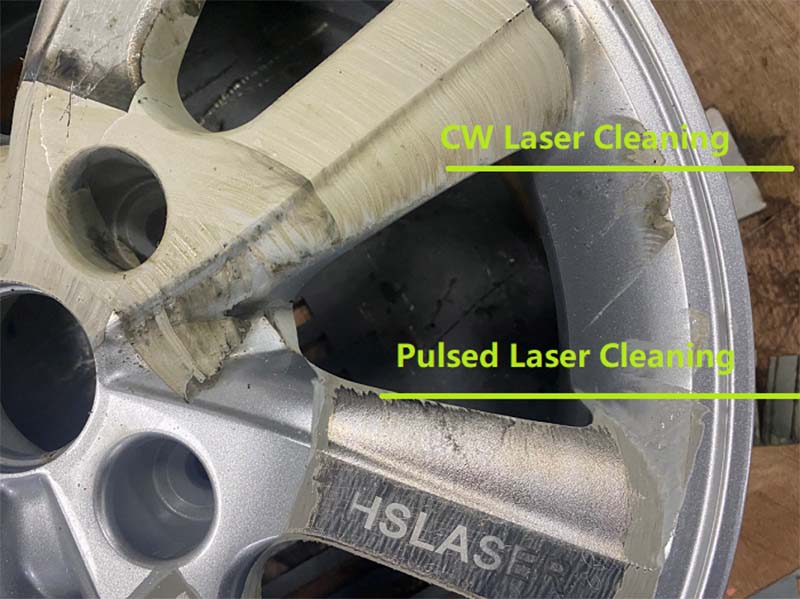
Pulse Laser Cleaning for Car Engine
Pulse laser cleaning machines emit short laser pulses with high peak power, causing surface contaminants or coatings to vaporize or peel off instantly without damaging the substrate. Key characteristics include highly concentrated energy and extremely short interaction time, typically in the nanosecond to microsecond range, with adjustable frequency.
Continuous Laser Cleaning Machine
Continuous laser cleaning machines emit a steady laser beam, delivering constant energy to the surface. This heats, vaporizes, or chemically reacts with contaminants to achieve cleaning. The core feature is stable, continuous energy output.
Pulse laser cleaning achieves “cold ablation” through high peak power and short pulses, minimizing the heat-affected zone. Continuous laser cleaning relies on stable, continuous energy for efficient cleaning, but heat accumulation is more significant. For the same material and contamination, pulse lasers are more effective at removing stubborn deposits like oxide layers and welding slag, while continuous lasers are more efficient for cleaning large, flat surfaces. Engine cleaning in automotive applications typically uses pulse laser systems.
The Best Backpack Pulsed Laser Cleaning Machine
This portable pulsed laser cleaning machine combines ease of use with all the advantages of laser cleaning. Handheld laser cleaning systems are becoming increasingly popular. Compared to traditional chemical cleaning, mechanical grinding, or sandblasting, laser cleaning offers significant benefits: environmentally friendly, consumable-free, high cleaning precision, minimal substrate damage, and selective removal of contaminants.
Portable laser cleaning systems are particularly effective for complex-shaped workpieces, localized fine cleaning, and on-site maintenance, providing greater flexibility, operational freedom, and significantly improving efficiency and versatility.
Handheld Pulsed Laser Cleaning Machine
This entry-level, compact, lightweight, and easy-to-use solution is ideal for cleaning and surface treatment. Its non-contact system makes it especially suitable for industrial parts cleaning, mold cleaning, weld cleaning, and precision workshop maintenance.
Flexible Operation: Can be handheld, shoulder-mounted, or fixed; suitable for indoor and outdoor use.
Portable Power Supply: Supports external batteries for outdoor or mobile applications.
Lightweight and Compact: Laser head weighs only 650 g, making it easy to handle and operate.
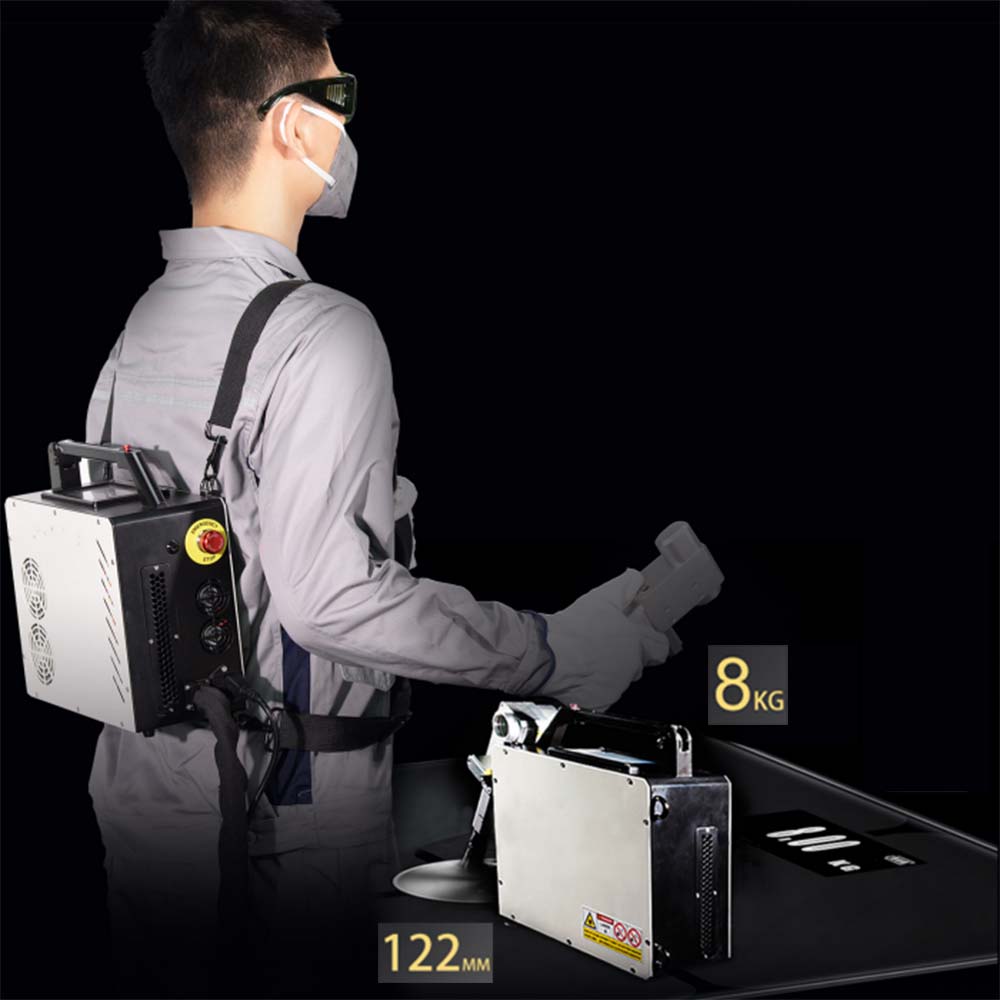
Features
Compact Design and Size
The handheld portable design is simple to operate, space-saving, and easy to transport.
Integrated Safety Features
Seamless combination of safety indicators and an ergonomic handle enhances both user safety and convenience.
Portability and Maneuverability
Supports multiple operating modes—handheld, shoulder-mounted, or fixed—making it easy to carry, store, and adapt to various cleaning scenarios, including long-duration or outdoor tasks.
High Cleaning Precision and Effectiveness
Delivers nano-level cleaning precision, effectively removing contaminants without damaging the substrate, ensuring both thorough cleaning and surface integrity.
System Performance and Longevity
Stable operation, user-friendly controls, and a long service life of up to 50,000 hours provide excellent reliability and cost-effectiveness.
Portable Power Supply
Supports external mobile power sources, offering long battery life for extended cleaning tasks in environments without fixed power supply.
Laser cleaning engine parts revolutionizes the industrial cleaning industry. This fiber laser cleaning system offers a non-contact cleaning process that requires no abrasive materials or chemicals, making it eco-friendly, cost-effective, and highly automated. The combination of precise, repeatable laser beam energy and software control ensures consistently high-quality cleaning of complex and critical components while minimizing downtime. Dapeng Laser Cleaning Machines are designed to provide equipment maintenance, automotive repair, and metalworking professionals with the highest-quality, most efficient cleaning solutions.
Summary
For automotive professionals and maintenance workshops, laser cleaning car engine transform how engine parts are serviced and restored. This technology not only removes rust, grease, carbon deposits, and coatings with pinpoint precision, but also preserves the integrity of sensitive engine surfaces that traditional cleaning methods often compromise. With portable pulsed laser cleaners available, even on-site cleaning becomes practical, allowing workshops to deliver faster, safer, and more environmentally responsible service to their clients.
